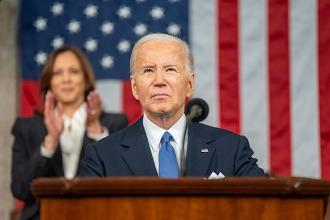BROOKLYN (VINnews/Sandy Eller) -It was an exhilarating moment for the women of Ezras Nashim as they took delivery of their long awaited ambulance on Sunday, their hard-fought legal battle to get a vehicle of their own finally coming to an end.
As previously reported on VIN News, the all-female Ezras Nashim emergency medical corps was approved by the New York State Emergency Medical Services Council to operate its own ambulance in August, overriding an October 2019 denial handed down by the New York City Regional Emergency Medical Council.
White with vivid purple stripes, the ambulance bears the Ezras Nashim logo in both English and Hebrew. Two letters of rabbinical approval are painted onto the 2020 Ford Transit’s rear windows, including one signed 40 years ago by Rabbi Refoel Blum, the Kasho Rav, and Rabbi Yosef Grunwald, the Pupa Rebbe, endorsing the creation of a women’s group that would provide medical care until those in childbirth could arrive at a hospital.
Several members of the NYPD’s 66 Precinct were on hand as Ezras Nashim founder Judge Ruchie Freier enjoyed an opportunity to show the new ambulance, including a logo that identifies Ezras Nashim as a partner organization of the FDNY. She described the state-of-the art ambulance as sleek and aerodynamic, noting that its van-like size will allow for greater maneuverability on Borough Park’s often crowded streets.
“We have always had doubters snickering and saying ‘I want to see ladies driving an ambulance,’ but six of us have already trained on it, women in their twenties to their seventies,” Freier told VIN News, adding that Ezras Nashim will be training additional women to drive the new vehicle.
Freier estimated that Ezras Nashim has at least forty to fifty EMTs in Borough Park, Flatbush and its Manhattan branch based in Stern College, with another class of 20 women training to join the corps. The group is very diverse and includes volunteers from all segments of the Jewish community at all levels of religious observance, who are fluent in English, Yiddish, Hebrew, Russian and Bucharian.
“Coming from a Torah perspective, women have their roles and men have theirs, but women have always taken care of women,” noted Freier. “By us coming forward we aren’t introducing something new – we are going back to the way things have always been.”
Michael E. Pollock, Ezras Nashim’s director of government affairs, guided Freier through the complex process of buying the ambulance. An EMT for more than 33 years, Pollock helped Freier customize the vehicle which includes a hydraulic stretcher – a state of the art device that he considers a must for any ambulance, no matter what gender crew is on board.
“These save the backs of EMTs who are carrying heavy loads,” explained Pollock. “If you look at other ambulance crews, they either have this equipment or they are putting it in. Even the big strong men need these – this is about saving lives and that is the end game, something that people keep forgetting.”
Pollock said that he recently came across a 2011 article on Ezras Nashim while cleaning out his office and that he has been a supporter of Freier’s since that time. A resident of Brighton, located on the southeast border of Rochester, he recalled discussing Ezras Nashim with a neighbor who had invited him over to eat in their succah years ago.
“I asked them what was wrong with these people and why they didn’t want women to be EMTs and they told me it was man’s work,” recalled Pollock, whose daughter is also an EMT. “I asked them how they could say that, it should be everyone’s work, and our relationship was never the same after that.”
Now that Ezras Nashim finally has its long-awaited rig, Freier is hoping for smoother sailing ahead. Her daughter is currently training to become an EMT and she is pleased to see young women preparing to join Ezras Nashim.
“I’m glad that these young women won’t have to go through what we went through,” said Freier. “We see now that young men under 30 understand that women can do this. That is the wonderful thing about bringing about change – you see a future that is much more open and accepting.”














